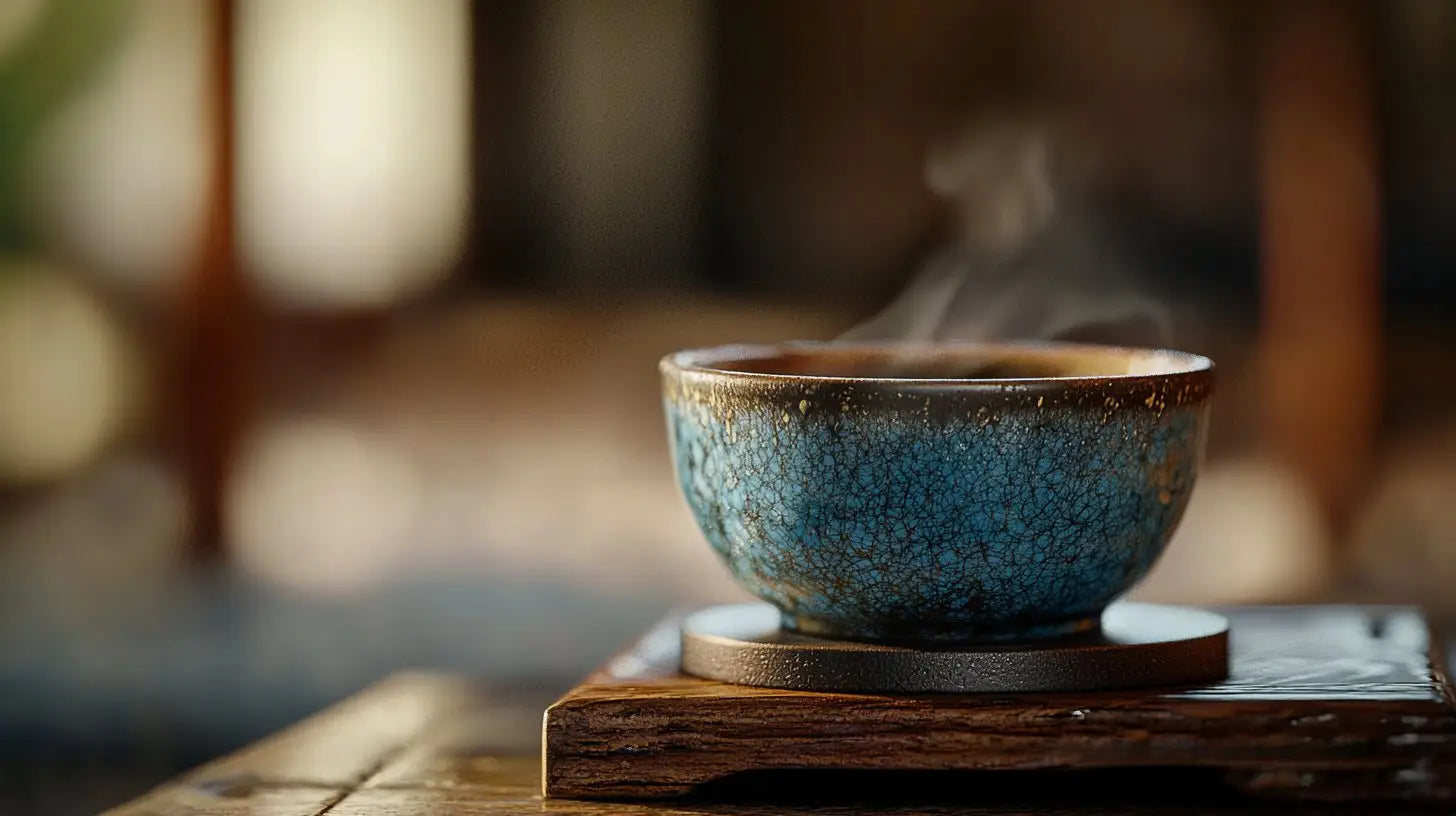In the heart of Yunnan Province lies Jianshui County – a town renowned for a centuries-old pottery tradition. Over 900 years of continuous craftsmanship have given rise to Jianshui Zitao, literally “Jianshui purple pottery.” This art form is prized for its rich clay colors, unglazed mirror finish, and exquisite carved designs. It ranks among the “Four Great Potteries of China,” and in 2008 the Jianshui Zitao technique was recognized as a National Intangible Cultural Heritage– a testament to its cultural significance and enduring legacy.
Also known poetically as “Southern Yunnan red jade”, Jianshui Zitao has long been cherished by scholars and tea lovers. Each piece serves as a canvas for art – often adorned with brush-painted calligraphy or motifs that reflect Chinese culture. Prized by collectors and tea connoisseurs alike, a Jianshui teapot is not just a brewing vessel but a living piece of history that brings the spirit of Yunnan’s heritage into the modern tea ritual.
Crafting Jianshui Zitao: The Art and Process
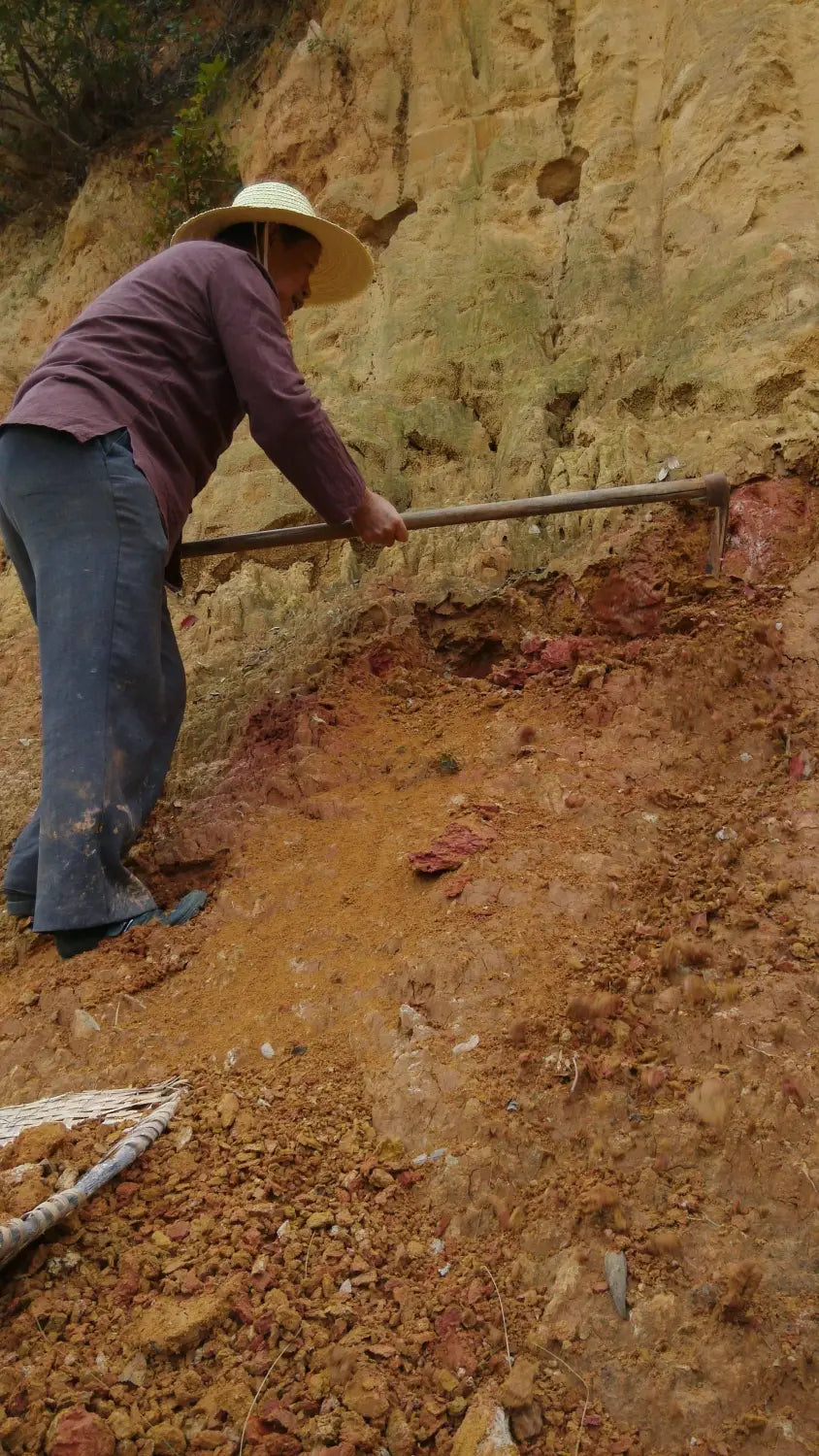
Every Jianshui Zitao creation begins with the earth itself. In Jianshui’s Wucai Mountain (“Five-Color Mountain”), potters source several types of clay in hues of white, red, yellow, cyan (green), and purple. These distinct clays – collectively known as the “five-color clay” – are the secret behind Jianshui pottery’s natural palette of tones. Traditionally, raw clay is dug from the mountainside and left to weather and dry, then pounded into a fine powder to remove impurities. Artisans next blend different clays to achieve the desired base material for a piece, whether a uniform color or a marbled combination. The mixed clay is strained with water to remove any grit, yielding a silky smooth clay slip, and then aged (a process called “chenfu”) for weeks or months to increase its plasticity and remove air pockets. Finally, the refined clay is kneaded repeatedly by hand – much like kneading dough – until it reaches the perfect consistency for shaping.
Once the clay is prepared, the potter forms it into the desired vessel. Shaping a Jianshui teapot is usually done by hand on a potter’s wheel, a skill that takes years to master. (In some cases, artisans may use molds for basic forms, but hand-thrown pieces retain subtle individual character.) During throwing, the potter must keep the walls of the vessel uniform in thickness and shape. After the basic form is complete, the semi-dry piece is carefully trimmed and refined. This trimming process – removing excess clay and perfecting the lines – is crucial to achieving a balanced, graceful silhouette. Even a slight asymmetry is noticeable to a trained eye, so the artisan’s steady hand and artistic sense make all the difference. The inevitable small marks of hand-craftsmanship are not flaws but part of the charm, imbuing each piece with one-of-a-kind character.
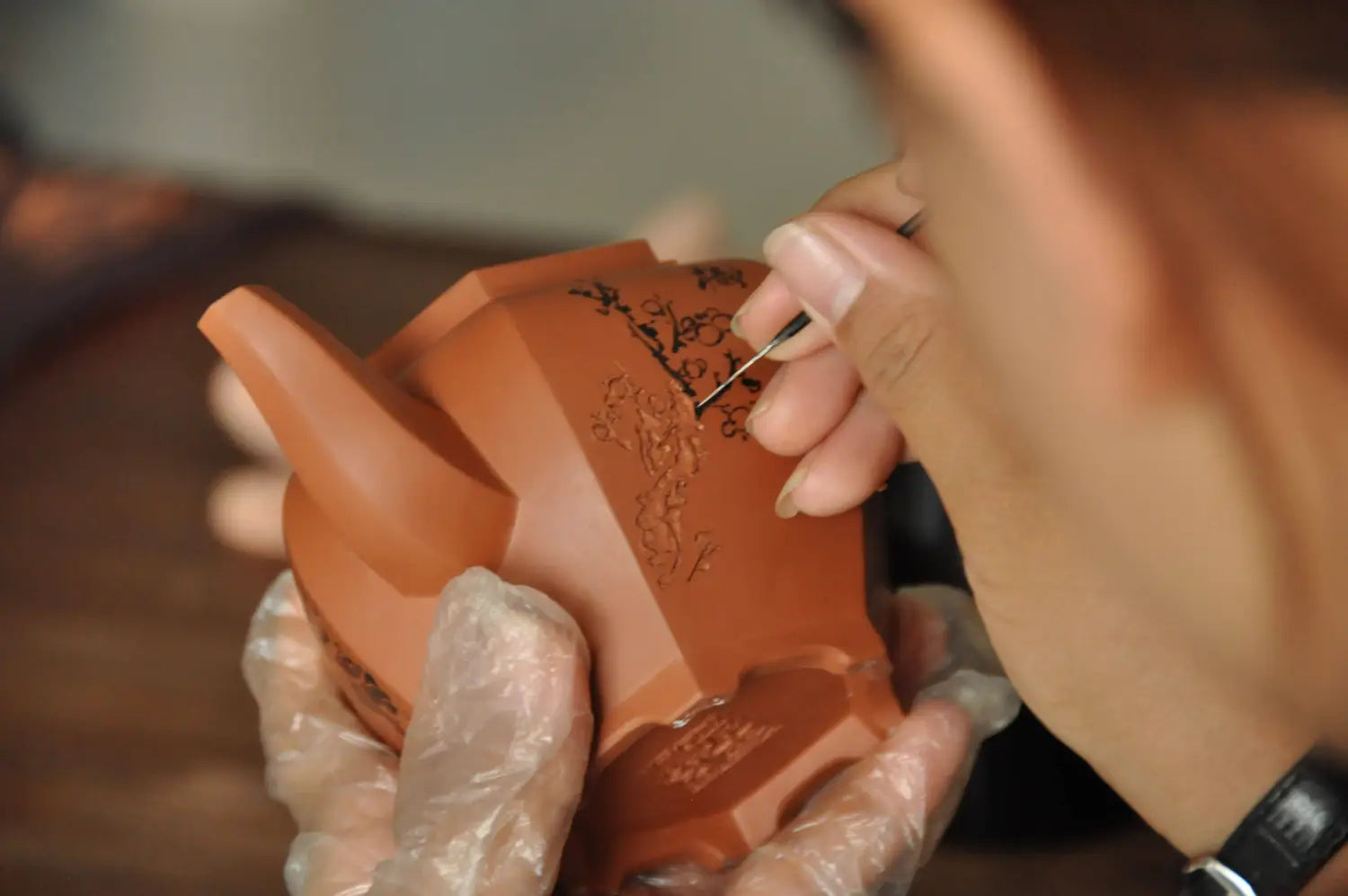
Once the clay body is formed and has dried to a leather-hard stage, it becomes the canvas for decoration. Jianshui Zitao is renowned for its intricate surface artistry. There are two primary decorative approaches: direct painting and carved inlay. In the direct method, artists use brushes and ink to paint or inscribe poems, motifs, or calligraphy directly onto the smooth clay surface of the unfired pot. This requires a steady hand and careful planning, as the curvature of the pot and the absorbency of the clay make freehand painting quite challenging. The second method – and the hallmark of Jianshui pottery – is the yinke yangtian carved inlay technique. Here, the design (often an elegant calligraphic inscription or detailed imagery) is first outlined on the clay and then carved into the surface by hand. Next, the incised lines or areas are filled with a different color clay slip, a process known as yang filling. After the inlay material sets, the excess is carefully scraped off, revealing a two-toned design embedded in the clay itself. This painstaking carve-and-fill method results in enduring artwork that won’t fade, since it becomes part of the vessel’s body. However, it is a demanding art – if the carving is too deep or the filling is applied poorly, the flaw will be permanent. Master Jianshui artisans spend years honing this skill. One popular variation is the “broken seal” motif, where portions of an inlaid design intentionally resemble the chipped edges of an ancient seal, giving the piece an antiqued charm.
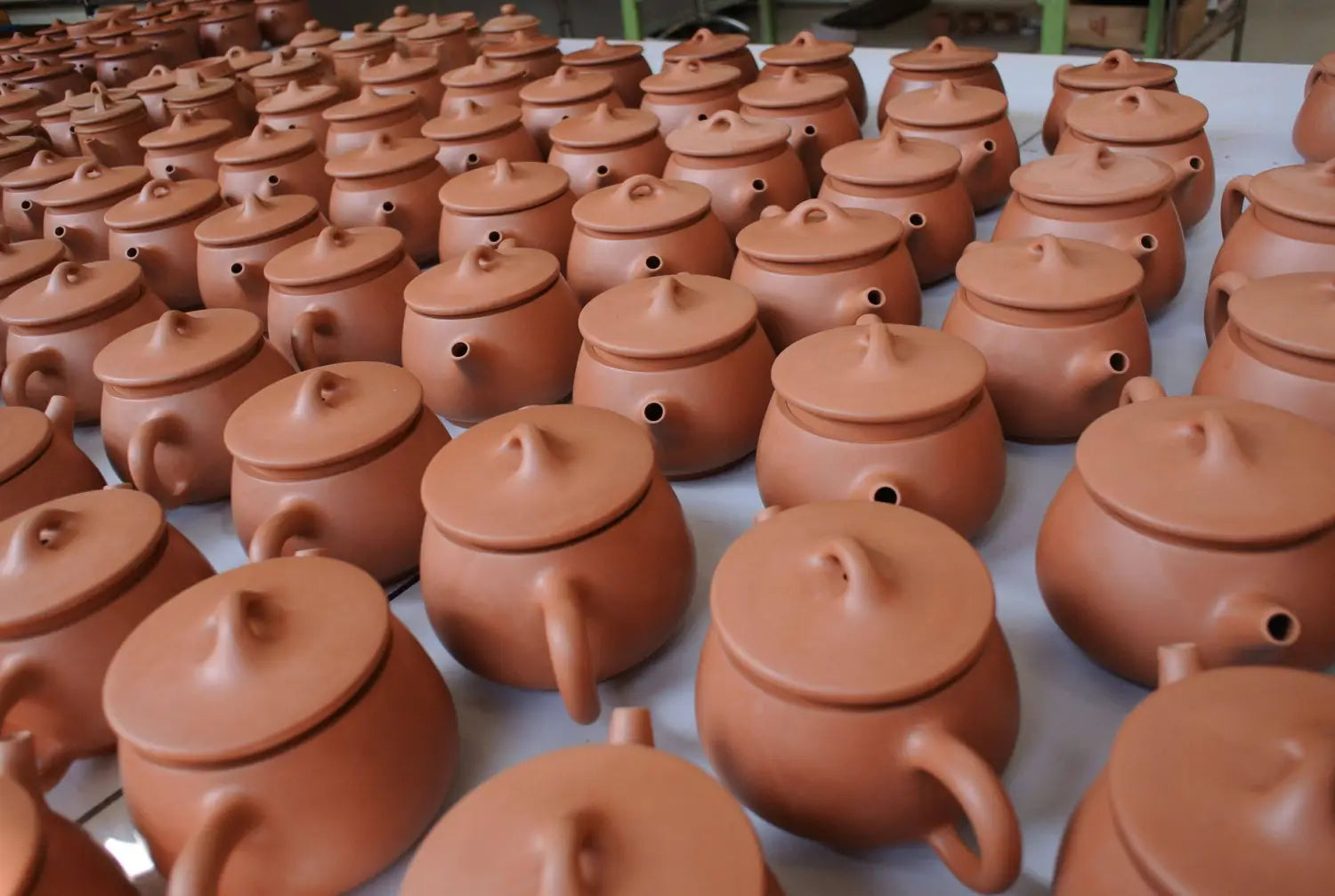
After decoration, the piece is allowed to dry completely before firing. Kiln firing is the pivotal stage that transforms the clay into durable ceramic. Jianshui Zitao is typically fired at over 1000°C in a kiln. Traditionally, potters used large wood-burning dragon kilns for this step. The firing process usually lasts about 8–12 hours, during which the intense heat vitrifies the clay. In the past, firing was fraught with uncertainty – the fine Jianshui clay can shrink around 20% during the firing, and pieces often warped or cracked as a result. It was not uncommon for less than half of a kiln’s load to emerge as intact, high-quality wares in traditional wood firings. Yet those that survived were exceptional. Seasoned potters say opening a wood-fired kiln is like opening a treasure chest – “you never know what you’ll get until you open it”, and each pot bears unique markings from the flames. Today, many artisans also employ electric or gas kilns for more predictable outcomes, but wood-fired Jianshui pottery remains highly valued for the unique character bestowed by the dancing fire. Whether fired with wood or gas, the goal is the same: to produce a strong, vitrified pot ready for its final refinement.
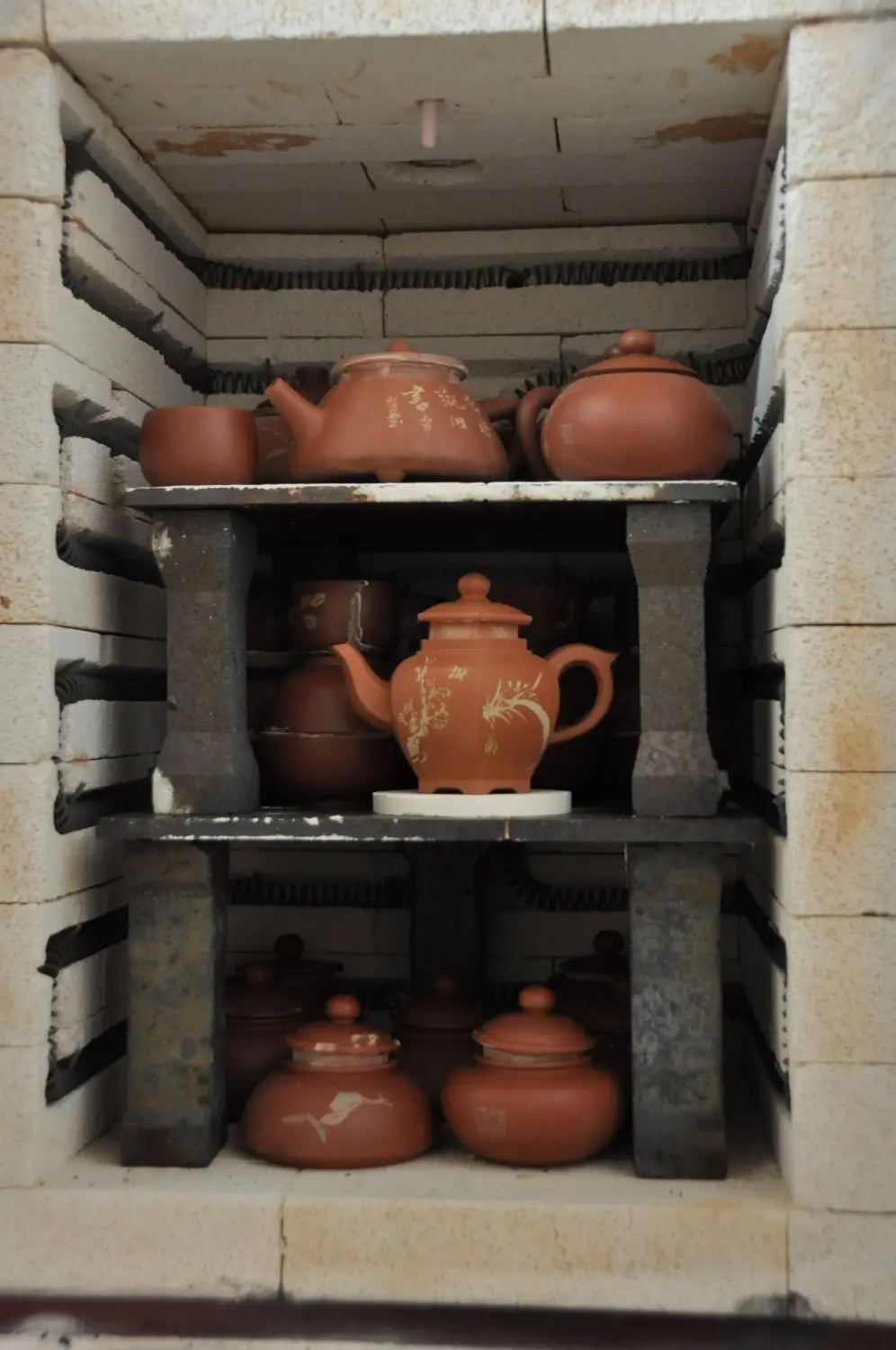 Before firing.
Before firing.
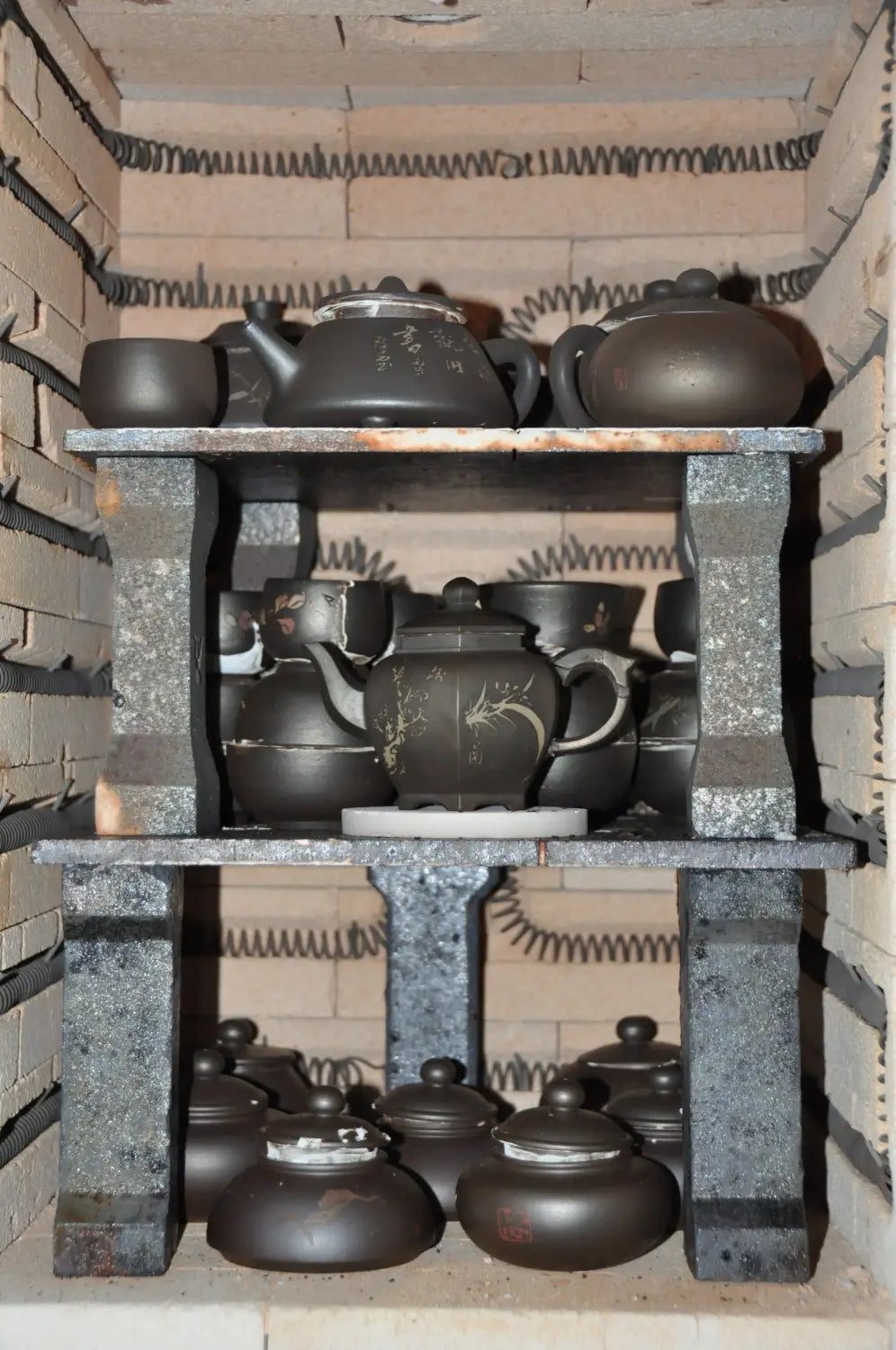
After firing.
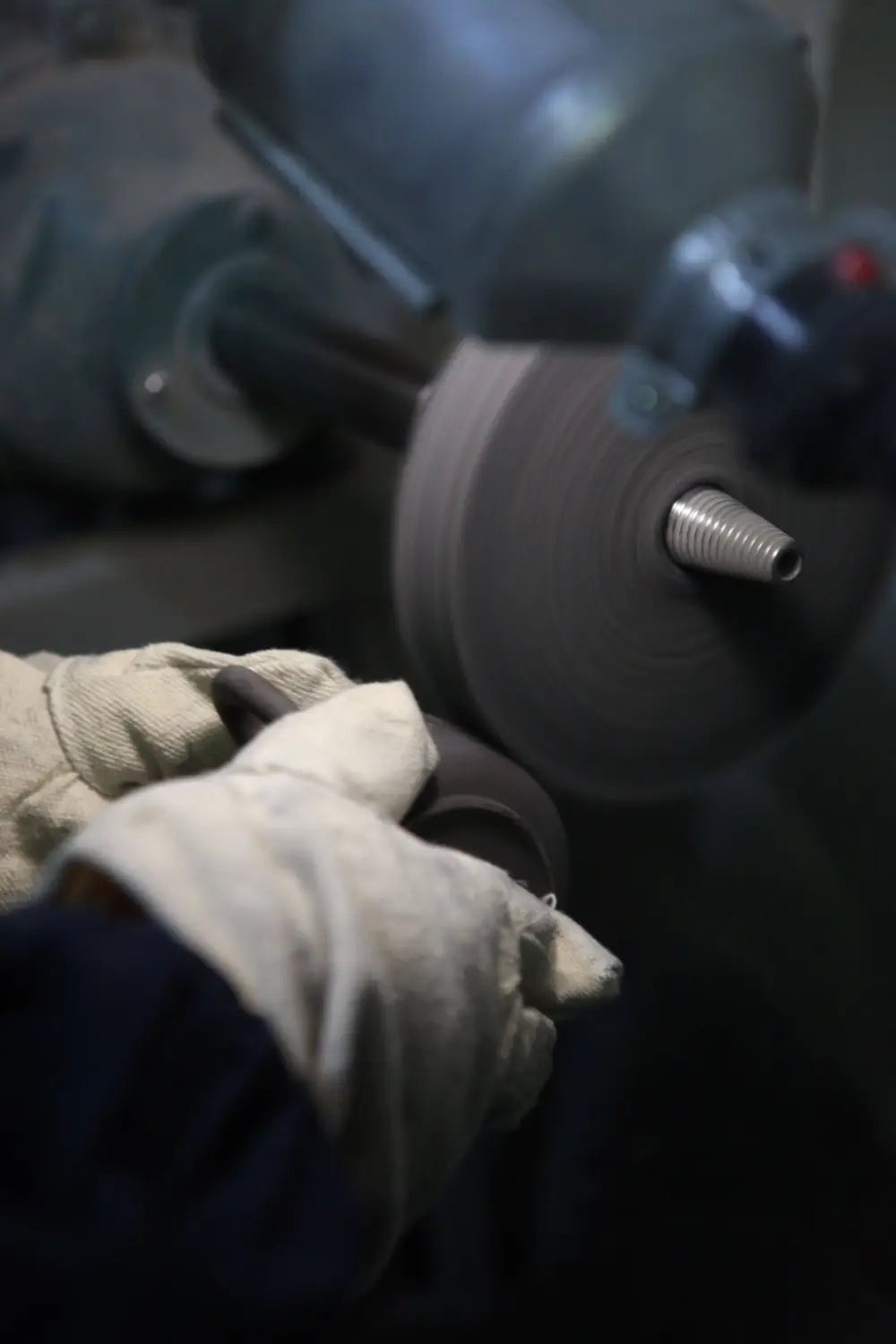
The final step is polishing, which brings out Jianshui Zitao’s signature luster. When a piece comes out of the kiln, its surface is often dulled by a layer of metallic oxide “fire skin.” Instead of applying any glaze, Jianshui potters polish the pottery by hand to achieve a lustrous finish. This involves several stages of sanding and buffing:contentReference[oaicite:30]{index=30}. First, a coarse abrasive (such as rough sandstone) is used to grind away the brittle fire-skin, revealing the pure clay beneath and opening up the clay’s pores for “breathing”:contentReference[oaicite:31]{index=31}. Next, finer-grit stones (traditionally a local oilstone) are rubbed over the surface to smooth it further and to expose the detailed inlaid patterns hidden under the fired clay layer:contentReference[oaicite:32]{index=32}. Finally, the piece is painstakingly buffed with an even finer stone or polishing tool (often agate or a hardened river stone) until the entire surface gleams like a mirror:contentReference[oaicite:33]{index=33}. This meticulous polishing can take many hours per piece, but the results are stunning: the pottery develops a natural glossy patina that rivals glazed ceramics, yet remains entirely unglazed.
The benefits of this glazeless finish are more than just aesthetic. The polished clay surface is exceptionally smooth yet it preserves the vessel’s micro-porous “breathable” quality. Jianshui Zitao ware is known to be lead-free and non-toxic, making it safe for brewing tea or storing food. The dense, high-fired clay also retains heat well and is extremely durable. In fact, Jianshui clay – being very pure – fires to a density more than twice that of Yixing clay (another famous teapot clay). This gives Jianshui teapots a satisfying heft and a unique thermal stability. It also results in that charming musical quality: a gentle tap on a polished Jianshui pot produces a clear, bell-like chime, indicating its excellent vitrification. All these traits make Jianshui Zitao pottery both beautiful to behold and highly practical for daily tea use.
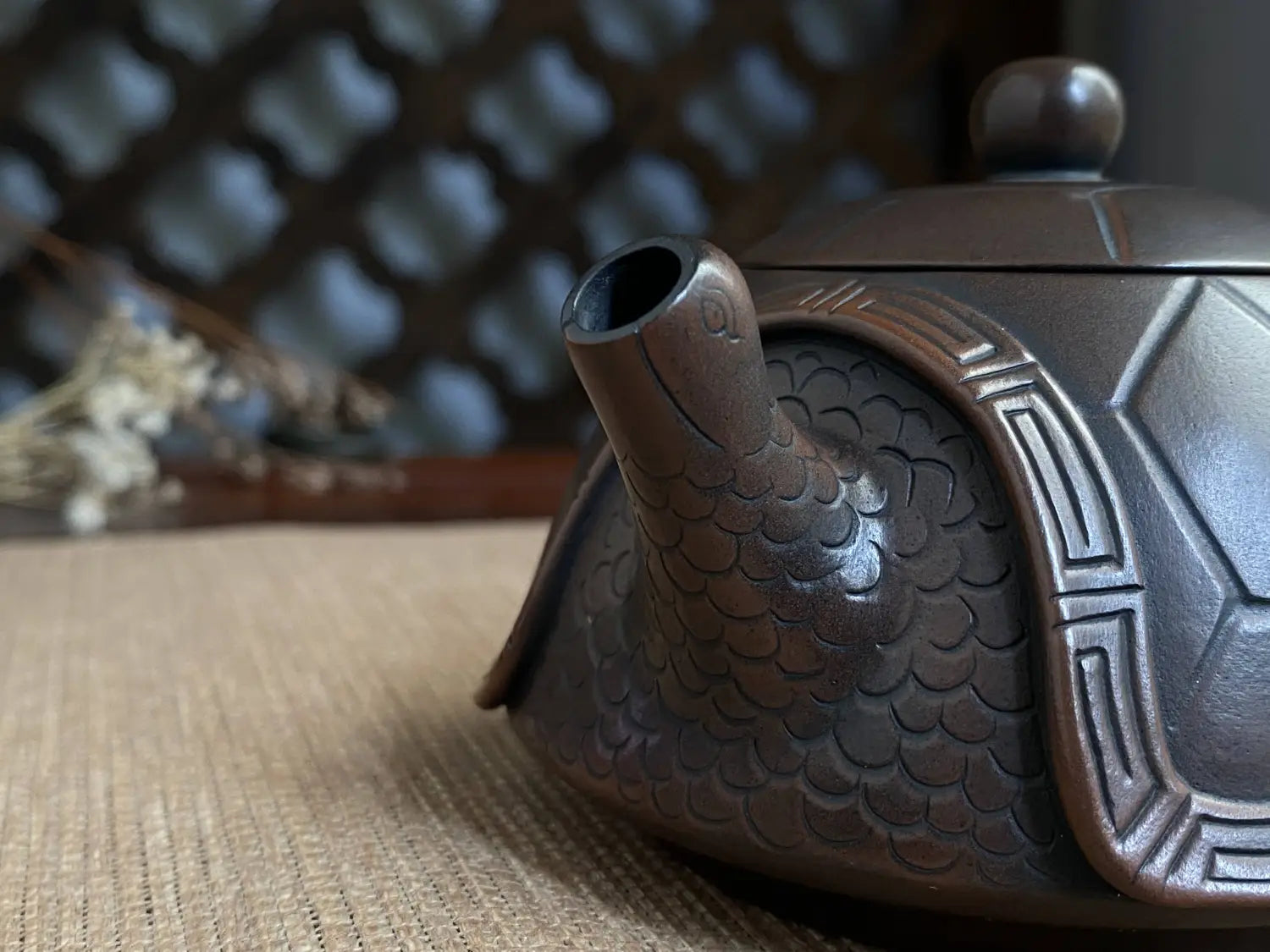
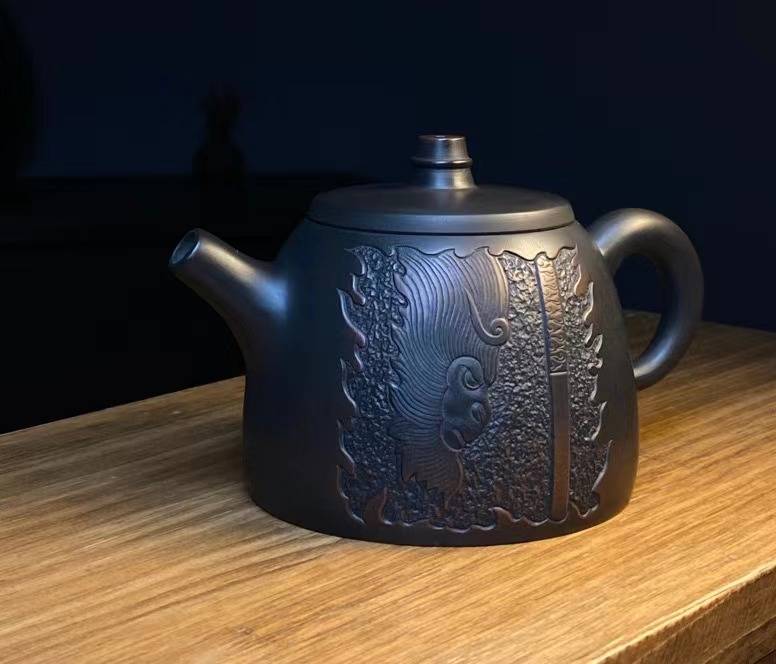
What Makes Jianshui Zitao Special?
Jianshui Purple Pottery stands out among other ceramics for several compelling reasons. Here are some key qualities that make it unique and highly sought-after:
- Five-Color Clay Blend: Jianshui pottery is made from a rare blend of five different clays from local mountains, yielding natural earthy tones without need for artificial pigments. This multi-colored clay not only gives the pottery its distinctive purplish-brown hue but also allows for creative marbling and color-contrast effects in the finished pieces.
- Unglazed, Mirror-Like Finish: Unlike most ceramics, Jianshui Zitao pieces are not glazed. Their shine comes from intensive hand-polishing with stones, resulting in a smooth, reflective surface often compared to polished jade or a mirror. The absence of glaze means the clay remains slightly porous, which can help tea mellow and enhances the tactile warmth of the vessel.
- Intricate Carved Artwork: Many Jianshui teapots and tea jars feature hand-carved calligraphy, paintings, or patterns inlaid with contrasting clay. These designs are not merely painted on but are embedded within the clay body itself, ensuring they never fade. From classical Chinese poems and seal script to nature motifs, each piece showcases a union of craftsmanship and art.
- Durability and Resonance: Fired at high temperatures and formed from dense clay, Jianshui pottery is exceptionally robust. It resists cracking under temperature change and its high density gives it an elegant resonance – when gently tapped, a well-made teapot rings with a pleasing chime. This audible sign of quality is a unique characteristic of Jianshui ware.
- Enhances Tea Experience: Jianshui Zitao teaware is beloved by tea enthusiasts not only for its beauty but also for how it interacts with tea. The mineral-rich clay is said to subtly enhance and smooth the flavor of brewed tea. Tea prepared or stored in Jianshui clay vessels often develops a rounded, sweeter taste. Additionally, the thick walls of these teapots retain heat efficiently, keeping tea at the ideal temperature for longer.
Explore Our Jianshui Zitao Collection
Tealibere proudly curates a selection of authentic Jianshui Zitao teaware, sourced directly from skilled artisans in Yunnan. Each teapot, cup, and tea jar in this collection carries the story of its maker – from the hand-dug clay to the final polish. Whether a tea connoisseur or an admirer of fine crafts, adding a Jianshui piece to the tea table means bringing home a living piece of Chinese heritage. Embrace the artistry and functionality of this renowned pottery tradition in your daily tea ritual. Explore Our Jianshui Zitao Collection »
